Brooklyn’s Oldest Butchers
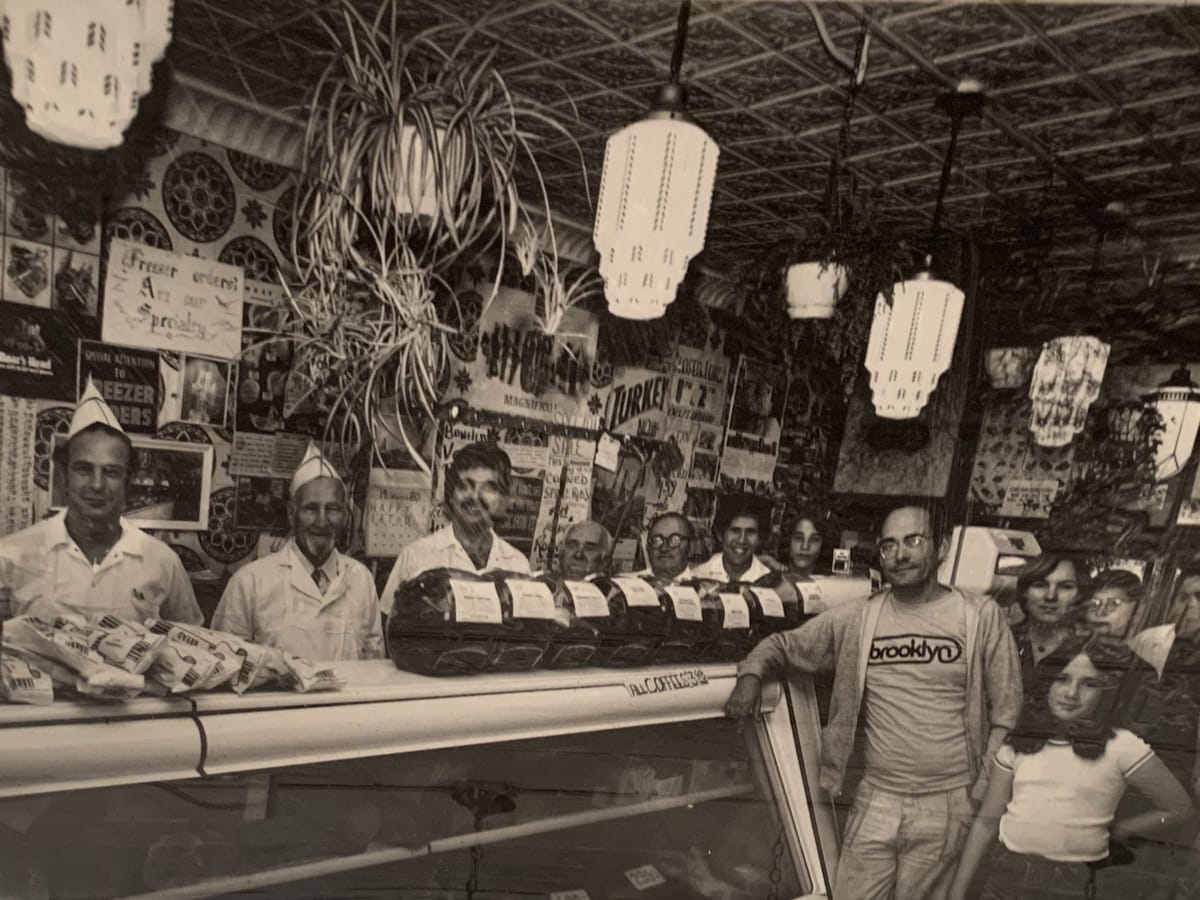

At any of Brooklyn’s old-school butcher shops, you’ll find loyal customers whose continued patronage comes from a pride bordering on smugness: no need to defend something so eminently, obviously wonderful as insisting on the best meat. For the Italian American community, that means great soppressata, fresh sausage, and prime antipasto. For the Polish, it means the best kielbasa, Polish-style ham and other salty, smoky treats. For the Jewish community, it means fresh brisket, carefully slaughtered by a certified shohet.
These five spots, scattered throughout Brooklyn, are some of the oldest and most beloved in the borough. Several of them date back to the dawn of the 20th century and are reminders of a period when Italian, Polish, and Jewish immigrants were carving out a niche for themselves in neighborhoods like Greenpoint, Cobble Hill, and Dyker Heights.
Faicco’s Pork Store
6511 11th Ave, Dyker Heights
“Making sausage is one of the simplest things in the world,” said Louis Faicco, who co-owns Faicco’s Pork Store with his brother, Matthew Faicco. “Plain sausage has just got fresh pork, salt, and pepper.
Lou gets in fresh pork shoulder, buys the best casings he can find, and makes sure that everything is always, always done by hand. In the cool room upstairs, Lou gestures proudly at the canopy of salamis hanging above his head, making sure to point out one of the store’s main specialties, soppressata. It’s a dry salami from the Apulia region in southern Italy, and it takes nearly three weeks to fully cure.
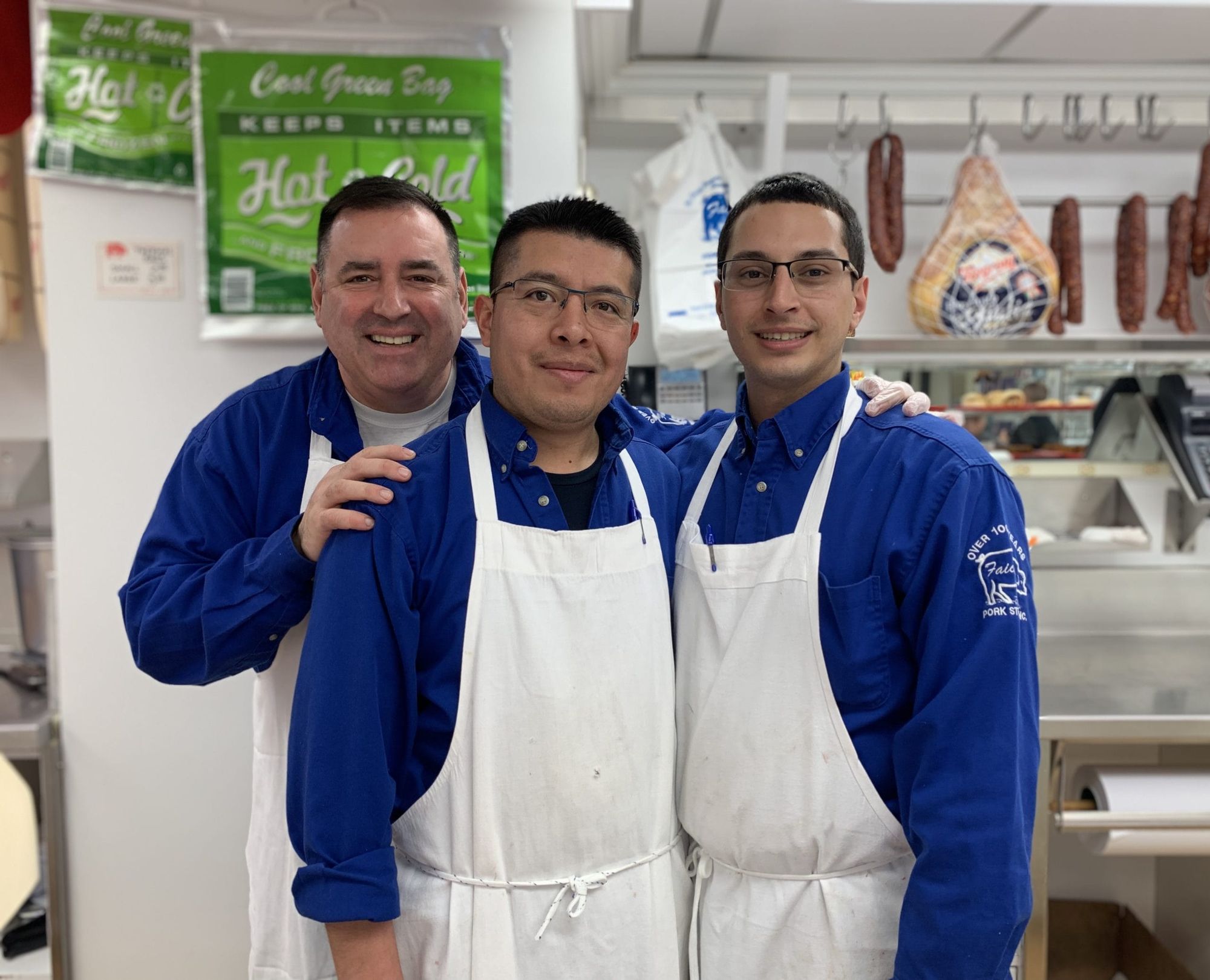
They’ve been doing things this way since the early 1900s when Italian immigrant Eduardo Faicco set up shop on Elizabeth Street in Manhattan. The store moved twice more: to Thompson Street in the 1920s, and then to Bleecker Street in the 1950s. The Brooklyn store opened around 1943 to provide extra production space. While the business has grown significantly, Lou and his employees still insist on doing things the old way, even if it’s not the easy way.
“A lot of the guys have been here 20, 30 years,” said Lou. “They’re part of this as much as I am. That’s how we’ve kept it going all these years.”
During the holidays, customers come in droves. In the 10-day stretch before Christmas, employees typically work from 7 a.m. to midnight, four or five days in a row. In addition to steaks and roasts, Italian Americans often order antipasti platters, a selection of cured meats, cheeses, and other appetizers that are traditionally eaten before the pasta and meat courses.
At the counter, a young man named Pat Degliuomini was ordering antipasti for his father’s funeral the next day. They would celebrate his life with food, he said. Degliuomini pointed to different meats and cheeses behind the glass, speaking fluently in Italian. He gestured to the employees behind the counter, all of whom seem to know him personally.
“These were [my father’s] friends.”
Staubitz Market
222 Court Street, Cobble Hill
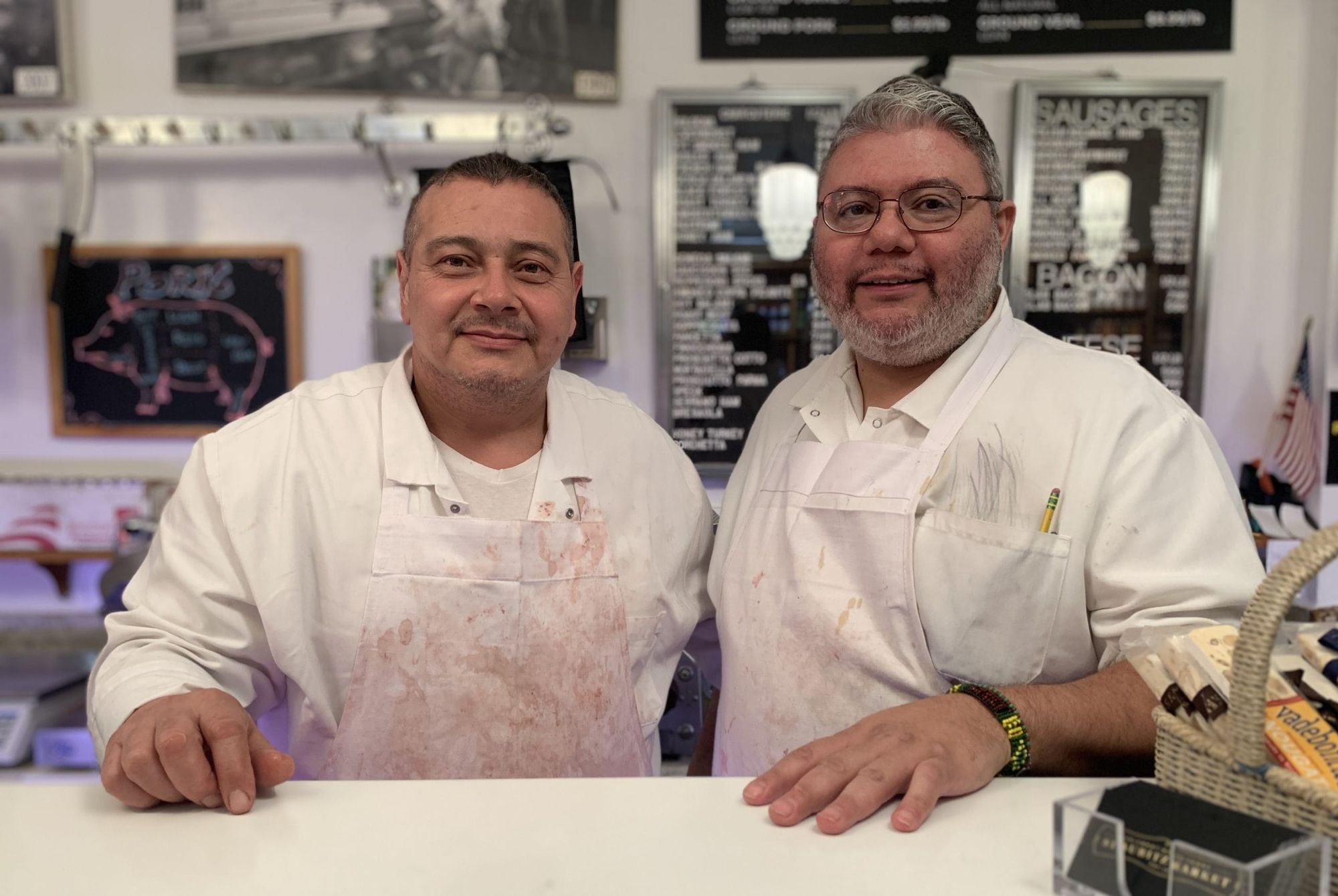
At first glance, Staubitz Market doesn’t seem to cling to any particular tradition. The name is German, yes, but there’s Italian sausage in the case, as well as Pecorino Romano, kielbasa, and Moroccan merguez. Lining the walls are sundries like Polish sauerkraut, local honey, and harissa.
“My son is into all these other knick-knacks,” co-owner John McFadden Sr. said, with an exasperated smile. He, however, is all about the beef.
Staubitz is arguably the oldest operating butcher in New York City. Opened in 1917 by German immigrant John Staubitz, it was later passed off to a man named Martin Lang before it eventually fell into the hands of a young John McFadden Sr., born in Brooklyn and raised in Bushwick and Cobble Hill.
John Sr. walked into Staubitz by accident in 1955. He was looking for an unemployment agency, shortly after graduating from a butcher trade school. When he told Lang the sort of job he was looking for, Lang told him to stay put. He would work through Friday, and, if the job didn’t suit him, he was free to go – he’s been there ever since.
As the neighborhood shifted, so has the store: what was once a primarily Irish neighborhood became mostly Italian around the middle of the 20th century, peaking at roughly 52% of the population in 1980, according to The Gotham Center for New York City History. They came looking mostly for chickens and veal cutlets, John Sr. remembers. And while chain stores like Whole Foods, Trader Joe’s, and Union Market have moved in, it hasn’t hurt business much.
“A lot of people don’t want to be caught in these big stores,” said John Sr. “They’d rather deal local.”
Robin, a local who moved back recently after 20 years in LA, gets nearly all of her meat from Staubitz, pointing out the vibrant red hue of the cubed beef and pristine marbling of the steaks as an explanation.
John Sr. owns the store with his son, John McFadden Jr., but other employees speak of John Sr. like a second father, and several have remained for over 30 years. If you were to request proof of loyalty, head butcher George Rodriguez would happily lift his apron to reveal a portrait of the young John Sr., immortalized in ink on his left calf.
719 Avenue U, Sheepshead Bay/Gravesend
Rosner Kosher Meat started as a pushcart on the Lower East Side in 1913. Scott Rosner’s grandparents, newly emigrated from Austria-Hungary and speaking only Yiddish, would help move products from kosher butcher to kosher butcher.
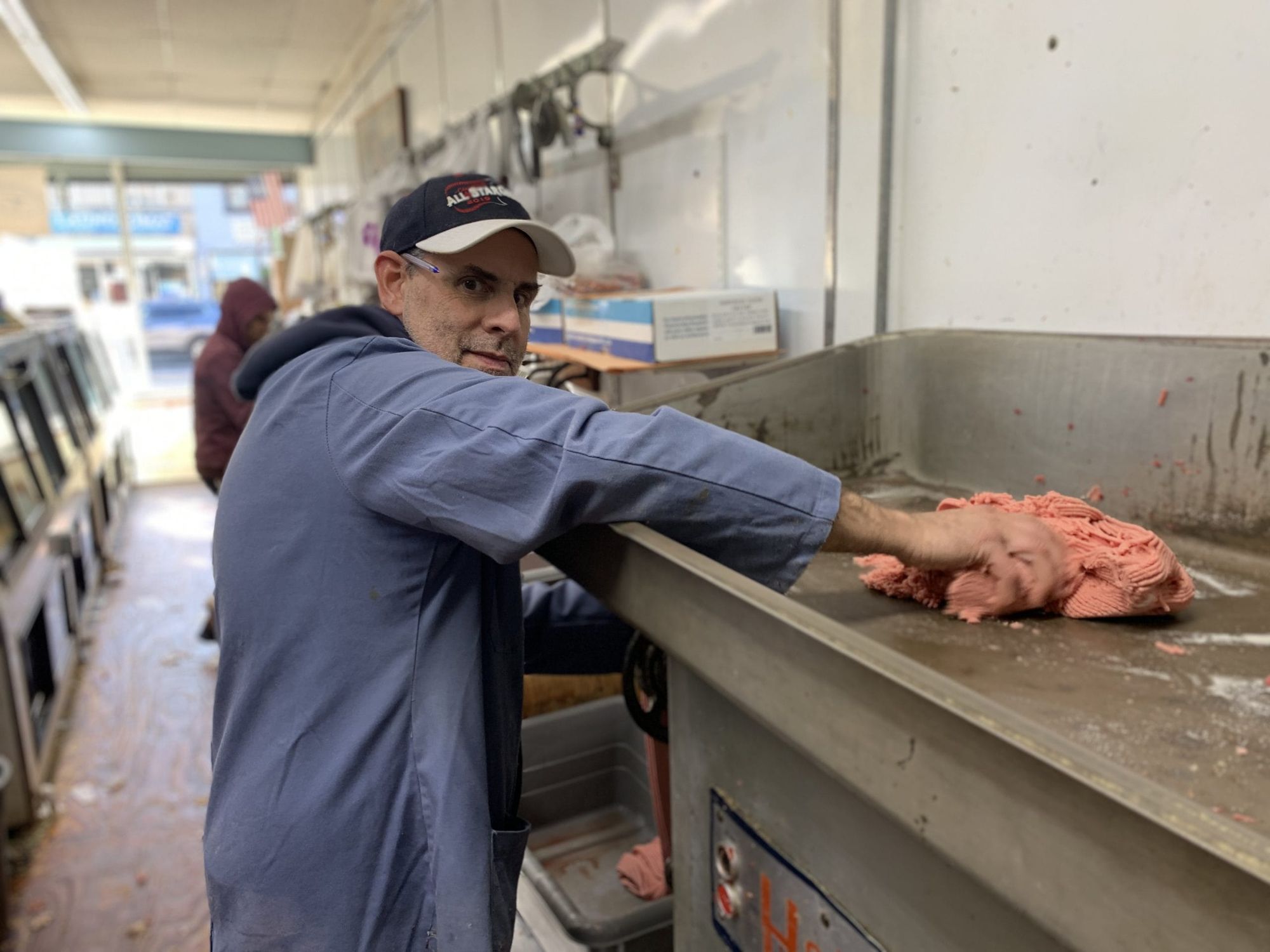
“Years ago, we had no refrigeration,” Rosner said. “If you didn’t move the merchandise, it would go bad.”
Rosner’s is not just kosher, but glatt kosher: they abide by the highest possible standards of kashrut, or kosher law. More specifically, they’re Beit Yosef, a kosher certification used widely by Sephardic Jews. Logistically, kosher meat proves a bit trickier than non-kosher, as it needs to be soaked and salted within 72 hours of slaughter, so it can’t travel too far and requires an on-site “mashgiach,” or kosher supervisor. All this work translates to a higher price point, meaning their clientele is primarily Jewish orthodox, abiding to eat kosher.
But it’s not all about kashrut; the meat has to taste good, too. Rosner and his assistants will age a piece of meat as long as a customer requests, or select an especially prime cut for them.
“We’ll do anything you want,” he said. He’ll utilize the whole animal, while still getting the most prime cuts from the meat. After working in the business for 38 years, he’s established connections with kosher meat companies, who always put aside some of the best stuff for him.
Is it his passion? Yes and no.
“It’s what you know,” he said. “It’s what you’re brought up with. I used to come in and help my father at five, six years old.”
He took over in 1982, and he’s served the same people for years, as orthodox families tend to stay local.
“It gets so that they say hello on the phone and you know who they are,” Rosner said.
357 Court St, Carroll Gardens
Porcine imagery is everywhere at G. Esposito & Sons Jersey Pork Store, from the human-sized pig out front to the ceramic Porky Pig guarding the refrigerated case. However, co-owner George Esposito insists, “we’re an everything store.” Since they opened in 1922, they’ve doled out everything from sweet and hot sausage, to steak, to veal. Absolutely everything, Esposito swears, is made or butchered by hand.
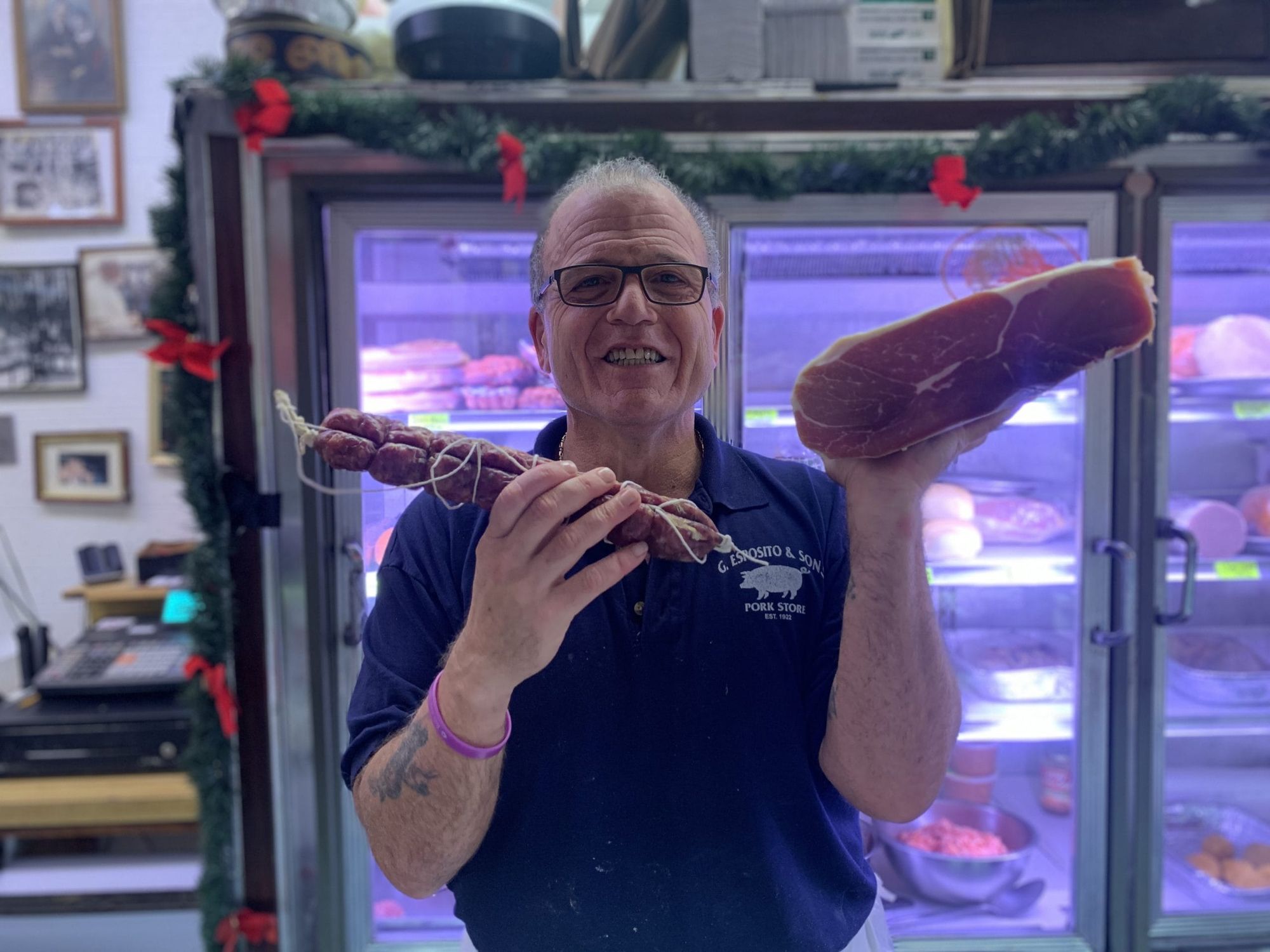
George began working at the store in 1968, when he was just eight years old. Back when his grandfather, an immigrant from Naples, first opened G. Esposito & Sons, the pork came only from New Jersey, one of the best sources for quality pork at the time. While the products now come from the Carolinas, the name “Jersey Pork Store” stuck around on the awning, an homage to the store’s halcyon days.
The cases still burst with joints of prosciutto di Parma, rosy cuts of pork and beef, and balls of fresh, milky mozzarella. People like Marco Bottarelli, a Borough Park local, still stop in for a sandwich. “The sandwiches are fantastic,” Bottarelli said. Favorites like eggplant parmigiana and breaded chicken cutlets sit cozily up front in the displays. Try the crisp arancini– fried risotto balls–they sit heavy in the hand, with a core of marinara and ground beef to warm the soul.
Business was booming back in the 1970s. “It was all about quality back then,” George told us. “Everyone loved us because we were fresh.” Then the BQE was built in 1977, cutting the neighborhood off and customers moving up toward Court Street, he said, and sending their business into a steep decline.
“The future, unfortunately, is coming to an end,” George said. “We are getting older. We’re here 100 years. Didn’t push our kids to take over the business, because the way the business is headed.”
915 Manhattan Ave, Greenpoint
W-Nassau Meat Market is one of Greenpoint’s last remaining Polish butchers, more widely (and affectionately) referred to as “Kiszka.” Kiszka is the Polish word for blood sausage, and it’s one thing that locals like Janusz Skowron, a Polish artist who’s lived in New York since the 1980s, still travel from all over the city for.
“It’s my national food before Christmas,” said Skowron.
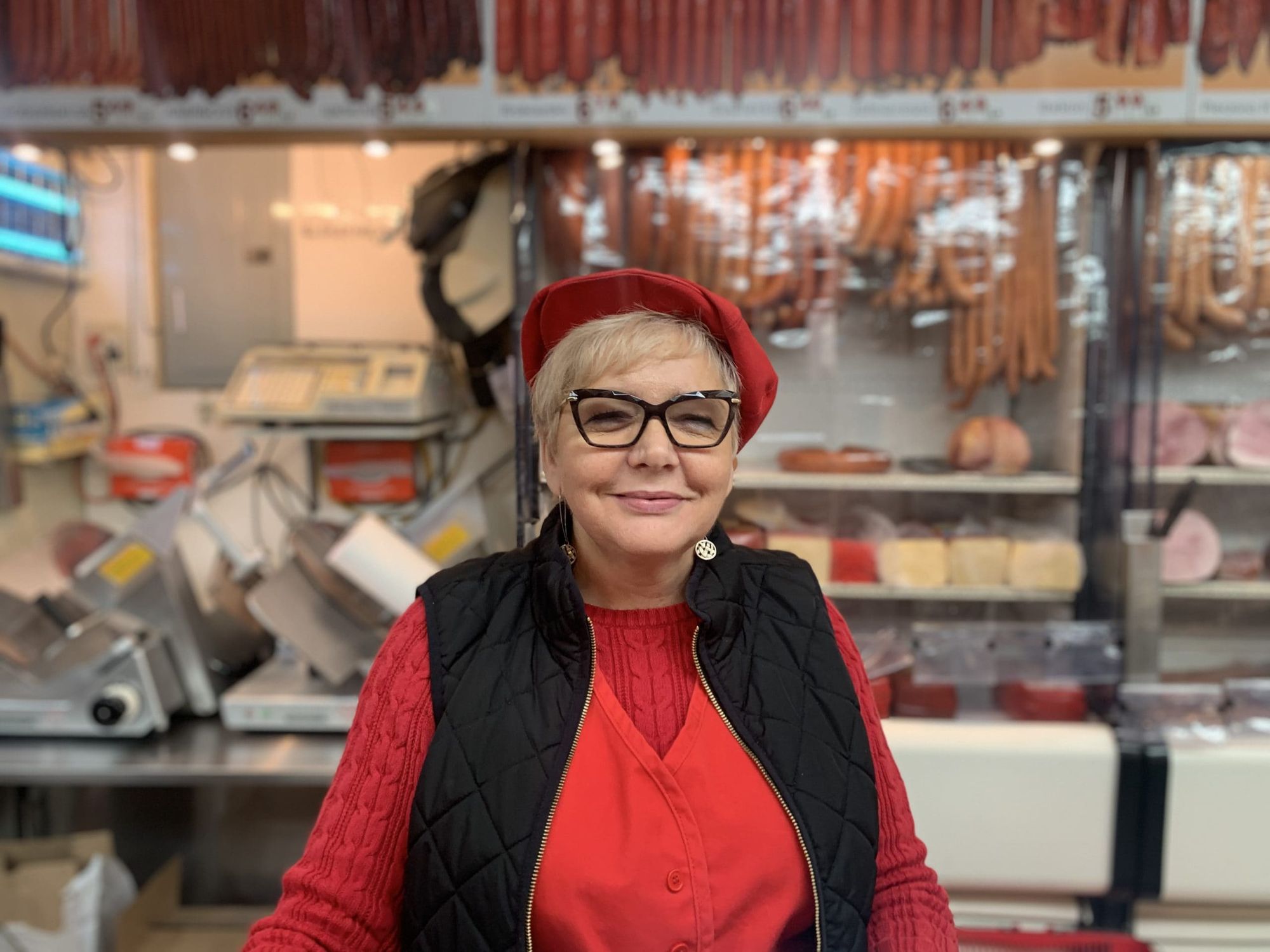
But Kiszka’s not all about the kiszka; it’s been a shrine to every kind of kielbasa since it opened in the 1980s. Kielbasa translates literally as sausage, and there are so, so many kinds: kabanosy, thin and jerky-like; podwawelska, best for grilling; and krajana, made from lean pork that’s been coarsely chopped.
At the counter, you’ll find Zofia Goreczny, a short, blond woman who managed the store for over 25 years. She’s since stepped into a less formal role, somewhere between manager and cashier. She came to Greenpoint over 30 years ago from Krakow, and, she said, it was simply easier to find a job in a Polish neighborhood, in a Polish store. She also loved Kiszka.
People come to Kiszka, Goreczny said, in search of a familiar taste, “They remember everything from Poland.” Other than ham and kielbasa, they come in search of Polish butter and Polish pickles, even Polish flour. They stock plenty of grocery items, particularly for the holidays, when they make sure to have lots of sauerkraut, wild mushrooms, and poppy seeds on hand for the many Polish families who cook their own traditional Christmas feasts.
This nostalgia has, unsurprisingly, helped keep them in business. While the neighborhood has become increasingly less Polish, customers still rely on them for familiar products, as well as for freshness, something they’re not always guaranteed at supermarkets. Kielbasa and ham purchased outside of a Polish store never tastes quite right, Goreczny said – always too sweet, or just a bit off, somehow.
Some customers have been coming in since they were children. “People know our store.”




